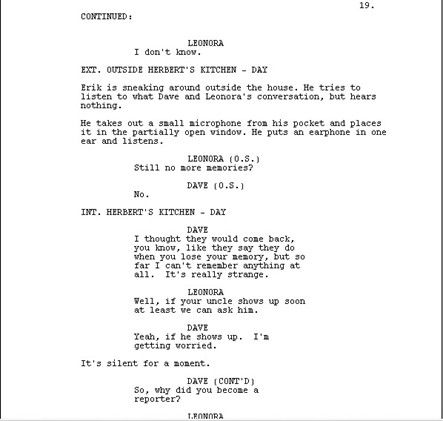Writing a short film screenplay is an exciting and manageable way into the world of screenwriting. This demands a tight focus on storytelling within a limited timeframe, so it's only logical that you master the basics. This article guides you through all the steps, formats, and tips for how to write a screenplay for a short film and ensure your story shines.
Steps and Tips To Improve Your Screeenplay Writing:
1. Purpose of Your Short Film
Definition of the Core Idea: Begin by defining what you want your short film to communicate. Think of a theme, message, or feeling you want to achieve.

2. Insight of Target Audience:
Consider who is watching and what you would like them to take away. Is it an emotional experience or a thought-provoking scenario? Keep in mind that purpose throughout the making of your short film.
3. Developing the Story Concept
 Keep it Simple: A short film will run from 5-20 minutes, so it's a little simplistic. One strong concept is much better than several subplots.
Hook an Audience: Since you're working with limited time, you're going to want to hook your audience right away. Start off with a compelling moment that gets you conflict, or an interesting element.
Keep it Simple: A short film will run from 5-20 minutes, so it's a little simplistic. One strong concept is much better than several subplots.
Hook an Audience: Since you're working with limited time, you're going to want to hook your audience right away. Start off with a compelling moment that gets you conflict, or an interesting element.
4. Make Characters Appealing
Less is More: Keep the number of characters minimal so that the story does not get too long. Typically, one to three characters are enough for a short film. Backstory and Goals: Give each character a clear backstory and a compelling motivation. This makes them feel real, even within the limited screen time.
5. Structure Your Screenplay Using the Three-Act Structure
Act One – Setup: Introduce your characters and your conflict. Establish the world of your movie and give a glimpse of what's at stake. Act Two – Conflict: The challenges build upon your main character throughout this act. Tension builds to drive toward the climax of the story. Act Three – Resolution: Bring your story to a close by resolving the conflict you set in place for your audience, including final shocks surprises, and lessons.
6. Perfect Short Film Script Writing Format
Standard Format. Use screenwriting software. Final Draft, Celtx or WriterDuet will do for you since these applications write in standard screenplay format. Screenplays are usually typewritten in 12-point Courier, with certain margins and spacing. Visual Clarity. The actions and settings shall be brief and only tell what's important for visualization of the plot. Too much description is bad in a screenplay; every line should tell something.
7. Effective Dialogue
Realistic but Plot-Driven: Short film dialogues must sound natural yet move the plot forward. Make it concise and use the dialogue to develop character or move the plot.
Read Aloud: Reading aloud can help you determine the flow of your dialogue. It should be like you are speaking, avoiding big words or long monologues.
8. Writing the First Draft
Let Creativity Flow. Create an outline, then sit down and start writing your screenplay. This is the point at which you're not looking to produce anything near perfection, just as much as possible on paper.
Stick to the core story. Do not go wandering off or providing too many details. On a short film, keep only that which is essential to convey the central story.
9. Revise for Tightness and Clarity
Cutting Unrelated Scenes: Remove all the scenes and dialogues that don't contribute to advancing the story. Every line must do one of the following or both: character development and progress in the plot.
Show Your Draft: You have your draft shown to others whom you are confident you can trust, even to your mentor, to gain feedback. New eyes help you realize where you might be going wrong.
10. Proper Formatting
Short Film Script Writing: Industry Standard Format This comprises clear scene headings, as well as action and dialogues. Scene headings state whether the scene is indoors, outdoors, location, as well as time of the day.
Proofreading Keep it clean and professional. No spelling or grammar will catch the audience's eye that easily. Tools for assistance are Grammarly and the Hemingway Editor among others.
11. Other Things to Keep in Mind
Write a Logline: Write a logline-a one-sentence summary of your short film. It should introduce the protagonist, the central conflict, and the stakes. Storyboard Your Script: Storyboarding your screenplay can help streamline production and communicate your vision clearly to the crew.
Conclusion
Writing a short screenplay requires precision, creativity, and understanding of the basic structure. Only with all these steps will your script keep the story short yet be able to dwell at length on the impact that such visuals and dialogue have that your screenplay will shine with the audience. All in all, practice, commitment, and the proper instruments will help you to clear your question of how to write a screenplay for a short film.



